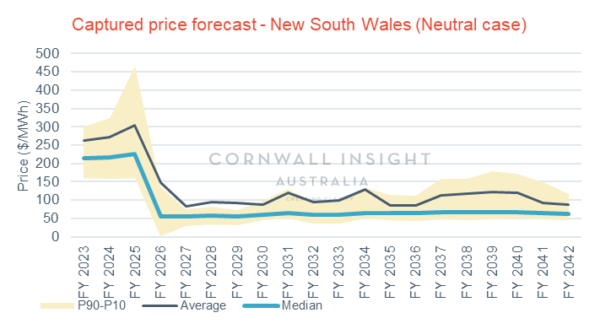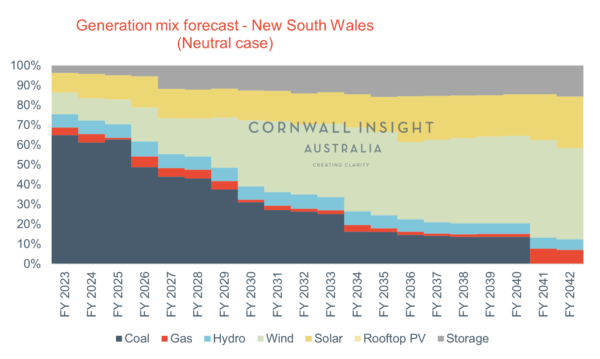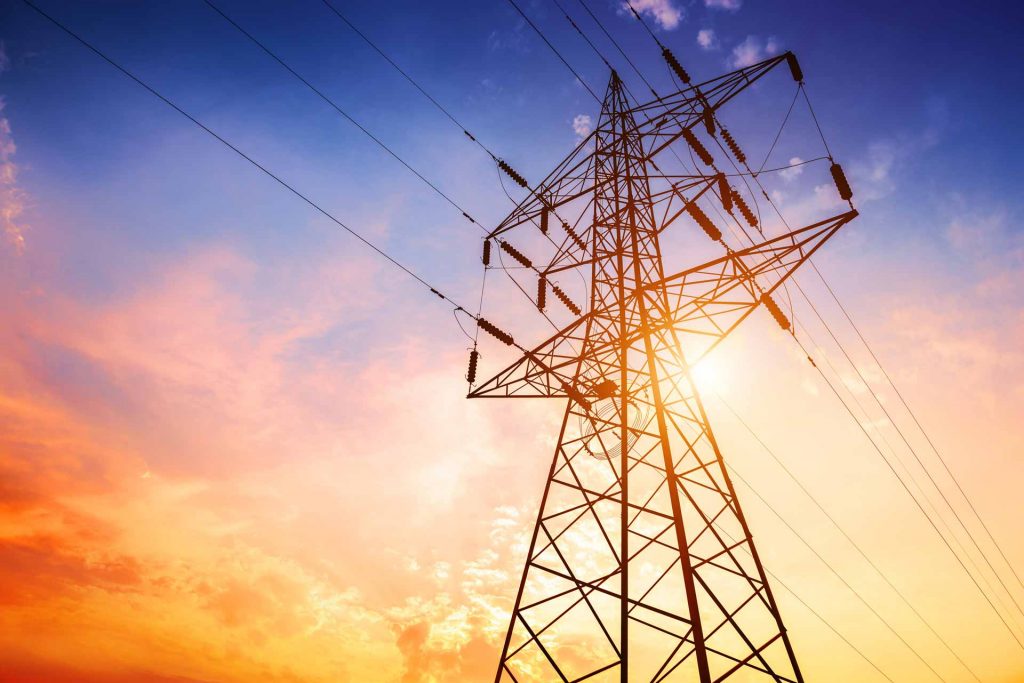According to new research from Cornwall Insight Australia’s (CIA) price forecast model, the Benchmark Power Curve (BPC), the annual median energy price for states in the National Electricity Market (NEM) will be around $200/MWh until 2026.
CIA’s modelling and analytics manager, Saliw Cleto, described the last few months in the Australian energy market as “very interesting” and expects to see energy bills rise to “unprecedented levels.”
“Our modelling forecasts that there will be little respite over the next three years,” said Cleto, “with most states, especially New South Wales, left with average median prices above 2021 levels.”
The BPC, which looks at power prices up until 2042, forecasts that after FY2025, prices will return to the 2021 levels of ~$40-80/MWh nationwide. Until then, however, the surging prices are set to continue as a result of the global energy crisis. New South Wales is expected to be hit hardest with a median price forecast at ~218/MWh over the next three years.

Image: Cornwall Insight Australia
“The general rise in energy costs post-pandemic was already pushing up prices, however, the move away from Russian gas across the EU has sent shockwaves through the global energy market,” continued Cleto. “As energy supplies tighten, costs will inevitably rise – something which we estimate to change over the next three years significantly.”
Beyond 2026
CIA’s predictions beyond 2026 foresee median prices flattening across the country, and that is because in the medium term the continued increase in renewables should help stabilise prices.
However, longer-term prices are set to become less stable with this increase in renewables filling in the gaps left by retiring coal plants.

Image: Cornwall Insight Australia
“As well as global pressure,” says Cleto, “Australia is going through a huge energy transition where more volatility in the market is expected. Coal plants are still, by far, the biggest supplier of energy in the country; however, a combination of aging plants and expected early closure means access to coal energy will decline, and the pace at which renewable energy gets commissioned and enabled (by transmission and distribution network upgrades) will be more important than ever.”
“The government, generators and suppliers must all work together to ensure a stable energy market is delivered as we move away from coal and towards a more sustainable future,” concluded Cleto.
This content is protected by copyright and may not be reused. If you want to cooperate with us and would like to reuse some of our content, please contact: editors@pv-magazine.com.









1 comment
By submitting this form you agree to pv magazine using your data for the purposes of publishing your comment.
Your personal data will only be disclosed or otherwise transmitted to third parties for the purposes of spam filtering or if this is necessary for technical maintenance of the website. Any other transfer to third parties will not take place unless this is justified on the basis of applicable data protection regulations or if pv magazine is legally obliged to do so.
You may revoke this consent at any time with effect for the future, in which case your personal data will be deleted immediately. Otherwise, your data will be deleted if pv magazine has processed your request or the purpose of data storage is fulfilled.
Further information on data privacy can be found in our Data Protection Policy.